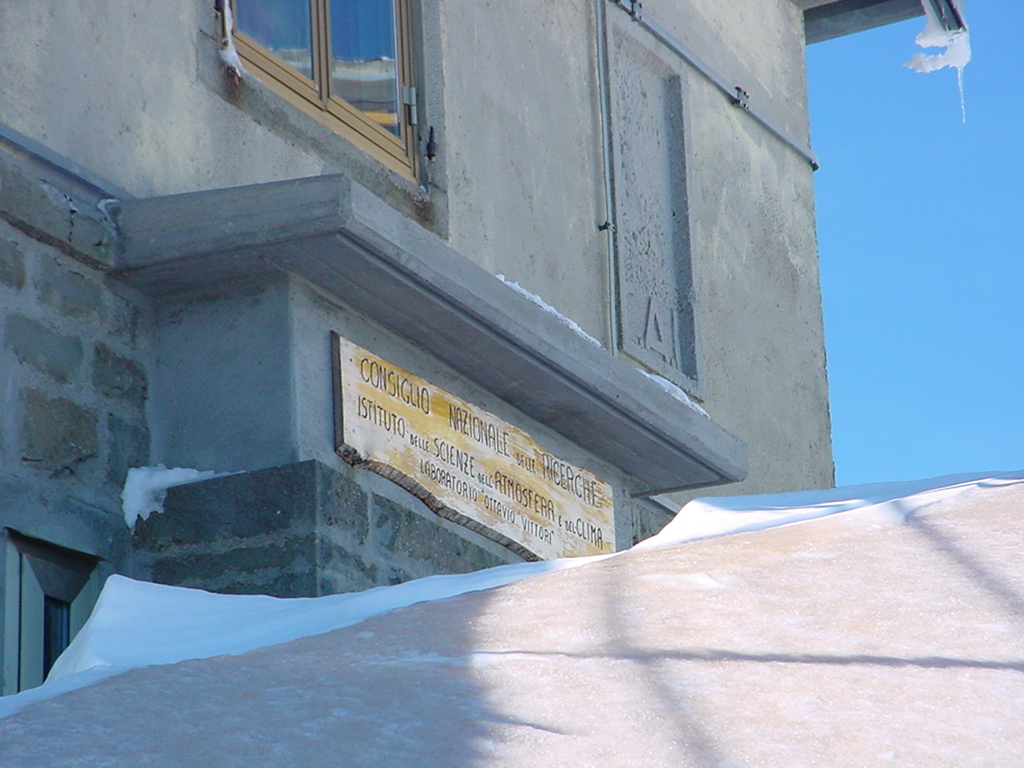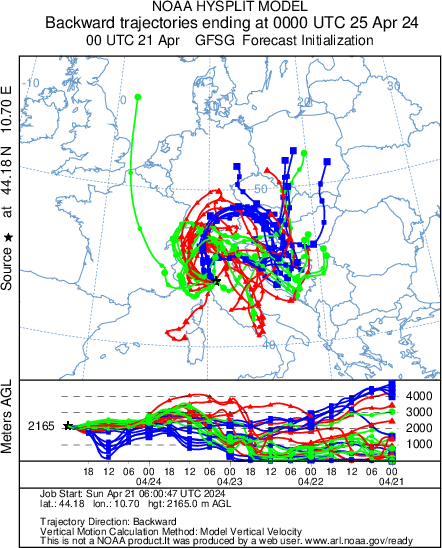Saharan dust transport
The presence of mineral dust in the atmosphere may play an important role in climate variations and in the definition of atmospheric gas balances. Because dust particles present a good surface for chemical reactions and for radiative processes, several studies have investigated how mineral aerosol may influence, directly or indirectly, concentrations of atmospheric trace gases. Saharan dust mobilisation over African deserts is an example of a natural source of mineral aerosols: Saharan storms export more mineral dust than any other area of the world, injecting into the atmosphere hundreds Tgs of desert particles. Although most of this mineral aerosol moves westward to the Atlantic Ocean and American continent, a non negligible part estimated is transported by synoptic circulation across the Mediterranean Basin towards Europe. As highlighted by laboratory and model studies as well as observations mineral dust may strongly affect the balance of tropospheric ozone. Because the Mediterranean Basin and South Europe are greatly subject to Saharan dust export and transport, the background ozone and aerosol levels in this area can be influenced by these processes.
Mt. Cimone represents one of the first mountain ridges that Saharan air masses encounter during their northward displacement. Since 1991, Saharan dust intrusions have been analysed at ICO-OV. In particular, we detected a Saharan dust event when the atmospheric concentration of coarse particle (1 μm ≤ Dp≤ 20 μm) significantly increased with air-masses coming from North Africa (as deduced by back-trajectory simulations). These phenomena were also studied during the EU-project MINATROC (Mineral Dust and Tropospheric Chemistry).
A statistical assessment of the influence of Saharan dust transports on background ozone concentrations over northern Italy during a 2-year period (2002–2003) was conducted during the ISAC – CESI Ricerca "OZOMONT-2" project. A total of 32 Saharan dust events (77 days) were identified at Mt. Cimone, showing a clear annual cycle with a maximum in spring–summer (about 80% of events), a secondary peak in autumn and a minimum in winter. In this work, we found that during the Saharan dust events the daily ozone concentrations decreased by 5% at ICO-OV in comparison with the average monthly means. Previous MINATROC investigation showed that, during the period June–December, 2000, 12 dust events were recorded and characterised by ozone concentrations lower than 4% - 21% of the monthly mean values. At ICO-OV, Saharan dust strongly influences the properties of atmospheric aerosol: during these events the concentration of coarse particles showed a mean value of 0.47 cm−3, significantly higher (+280%) than the “background” average value.
Near-real-time dust event identification Service An experimental service for the near-real time (NRT) dust alert is active for ICO-OV. The service, currently under advanced test phase, provides a near-real time detection of Saharan Dust Events (SDE) from North Africa as deduced by ICO-OV observations at Monte Cimone. SDE is detected when the in-situ aerosol number coarse (i.e. Dp > 1um) concentration exceeds 0.5 cm-3 for three consecutive hours and air-masses from Northern Africa are forecast by the HYSPLIT model, provided by NOAA-ARL. To take part in the test phase and to sign up for the service, write an e-mail to CIMONE-Dust-Alert [at] isac.cnr.it providing in the mail body the following information: Name, Surname, Institution, purpose of subscription. Your feedback is very welcome!!! Selected references Marinoni, A, Cristofanelli P, Calzolari F, Roccato F, Bonafe' U, Bonasoni. P., 2008. Continuous measurements of aerosol physical parameters at the Mt. Cimone GAW Station (Italy - 2165 m a.s.l). Science of the Total Environment, 391. Marenco, F, Bonasoni P, Calzolari F, Ceriani M, Chiari M, Cristofanelli P, D’Alessandro A, Fermo P, Lucarelli F, Mazzei F et al., 2006. Characterization of atmospheric aerosols at Monta Cimone, Italy, during summer 2004: source apportionment and transport mechanisms. J. Geophys. Res., 111(D24202). Beine, HJ, Amoroso A, Esposito G, Sparapani R, Ianniello A, Georgiadis T, Nardino M, Bonasoni P, Cristofanelli P, Domine' F., 2005. Deposition of atmospheric nitrous acid on alkaline snow surfaces. Geophysical Research Letters, 32(L10808). Bonasoni, P, Cristofanelli P, Calzolari F, U. Bonafe, Evangelisti F, Stohl A, Zauli Sajani S, van Dingenen R, Colombo T, Balkanski Y., 2004. Aerosol-ozone correlations during dust transport episodes. Atmos. Chem. Phys., 4. van Dingenen, R, Putaud JP, Martins-Dos Santos S, Raes F., 2005. Physical aerosol properties and their relation to air mass origin at Monte Cimone (Italy) during the first MINATROC campaign. Atmos. Chem. Phys., 5:2203–2226.



